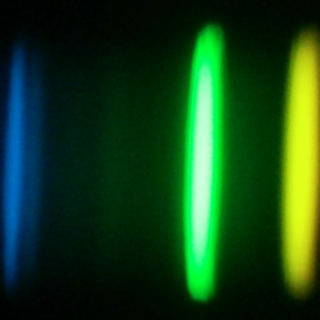Bibcode
Muñoz Bermejo, J.; Asensio-Ramos, A.; Allende-Prieto, C.
Bibliographical reference
Astronomy and Astrophysics, Volume 553, id.A95, 9 pp.
Advertised on:
5
2013
Journal
Citations
28
Refereed citations
27
Description
Context. The derivation of the effective temperature of a star is a
critical first step in a detailed spectroscopic analysis. Spectroscopic
methods suffer from systematic errors related to model simplifications.
Photometric methods may be more robust, but are exposed to the
distortions caused by interstellar reddening. Direct methods are
difficult to apply, since fundamental data of high accuracy are hard to
obtain. Aims: We explore a new approach in which the spectrum is
used to characterize a star's effective temperature based on a
calibration established by a small set of standard stars.
Methods: We perform principal component analysis on homogeneous
libraries of stellar spectra, then calibrate a relationship between the
principal components and the effective temperature using a set of stars
with reliable effective temperatures. Results: We find that our
procedure gives excellent consistency when spectra from a homogenous set
of observations are used. Systematic offsets may appear when combining
observations from different sources. Using as reference the spectra of
stars with high-quality spectroscopic temperatures in the Elodie
library, we define a temperature scale for FG-type disk dwarfs with an
internal consistency of about 50 K, in excellent agreement with
temperatures from direct determinations and widely used scales based on
the infrared flux method.
Tables 2, 4, 5, and reduced spectra are only available at the CDS via
anonymous ftp to cdsarc.u-strasbg.fr
(ftp://130.79.128.5) or via http://cdsarc.u-strasbg.fr/viz-bin/qcat?J/A+A/553/A95
Related projects

Magnetism, Polarization and Radiative Transfer in Astrophysics
Magnetic fields pervade all astrophysical plasmas and govern most of the variability in the Universe at intermediate time scales. They are present in stars across the whole Hertzsprung-Russell diagram, in galaxies, and even perhaps in the intergalactic medium. Polarized light provides the most reliable source of information at our disposal for the
Ernest
Alsina Ballester

Chemical Abundances in Stars
Stellar spectroscopy allows us to determine the properties and chemical compositions of stars. From this information for stars of different ages in the Milky Way, it is possible to reconstruct the chemical evolution of the Galaxy, as well as the origin of the elements heavier than boron, created mainly in stellar interiors. It is also possible to
Carlos
Allende Prieto